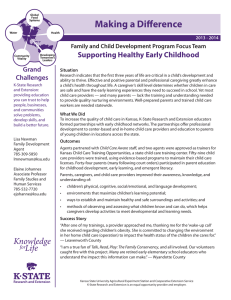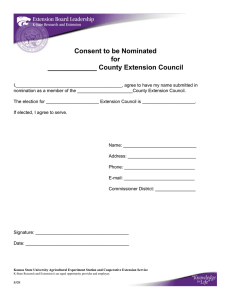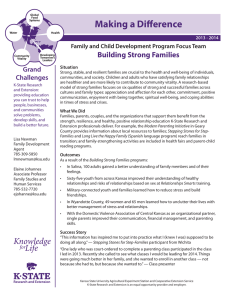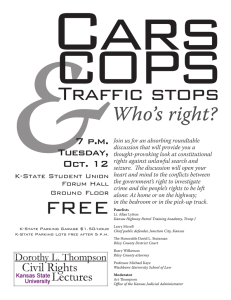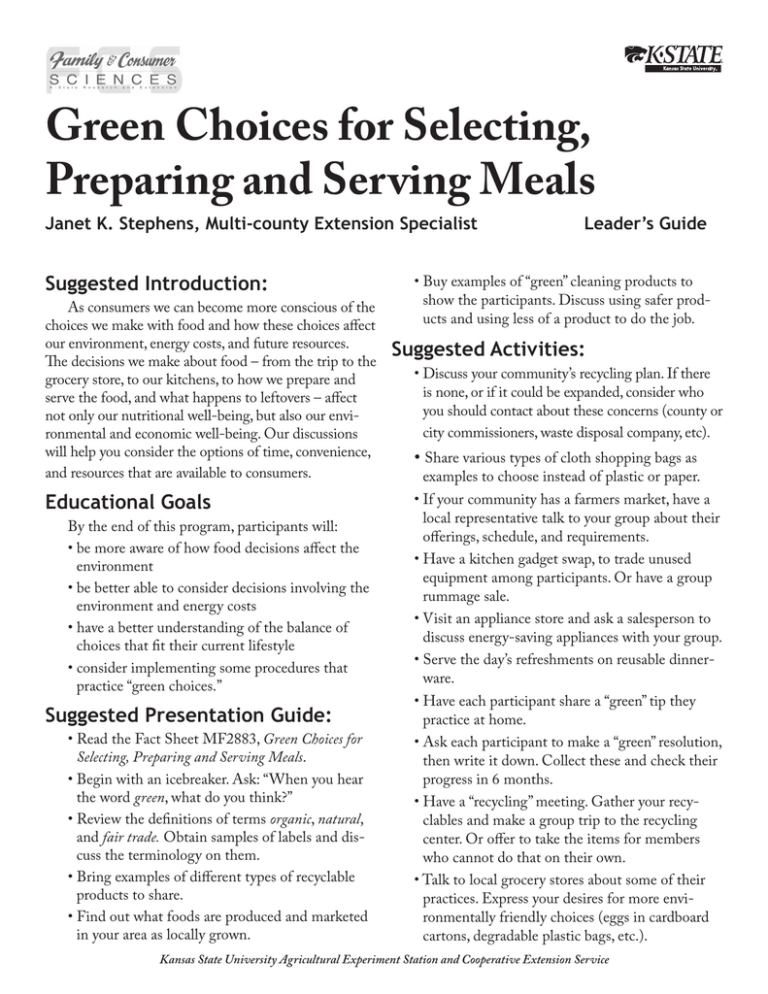
Green Choices for Selecting,
Preparing and Serving Meals
Janet K. Stephens, Multi-county Extension Specialist
Suggested Introduction:
As consumers we can become more conscious of the
choices we make with food and how these choices affect
our environment, energy costs, and future resources.
The decisions we make about food – from the trip to the
grocery store, to our kitchens, to how we prepare and
serve the food, and what happens to leftovers – affect
not only our nutritional well-being, but also our environmental and economic well-being. Our discussions
will help you consider the options of time, convenience,
and resources that are available to consumers.
Educational Goals
By the end of this program, participants will:
• be more aware of how food decisions affect the
environment
• be better able to consider decisions involving the
environment and energy costs
• have a better understanding of the balance of
choices that fit their current lifestyle
• consider implementing some procedures that
practice “green choices.”
Suggested Presentation Guide:
• Read the Fact Sheet MF2883, Green Choices for
Selecting, Preparing and Serving Meals.
• Begin with an icebreaker. Ask: “When you hear
the word green, what do you think?”
• Review the definitions of terms organic, natural,
and fair trade. Obtain samples of labels and discuss the terminology on them.
• Bring examples of different types of recyclable
products to share.
• Find out what foods are produced and marketed
in your area as locally grown.
Leader’s Guide
• Buy examples of “green” cleaning products to
show the participants. Discuss using safer products and using less of a product to do the job.
Suggested Activities:
• Discuss your community’s recycling plan. If there
is none, or if it could be expanded, consider who
you should contact about these concerns (county or
city commissioners, waste disposal company, etc).
• Share various types of cloth shopping bags as
examples to choose instead of plastic or paper.
• If your community has a farmers market, have a
local representative talk to your group about their
offerings, schedule, and requirements.
• Have a kitchen gadget swap, to trade unused
equipment among participants. Or have a group
rummage sale.
• Visit an appliance store and ask a salesperson to
discuss energy-saving appliances with your group.
• Serve the day’s refreshments on reusable dinnerware.
• Have each participant share a “green” tip they
practice at home.
• Ask each participant to make a “green” resolution,
then write it down. Collect these and check their
progress in 6 months.
• Have a “recycling” meeting. Gather your recyclables and make a group trip to the recycling
center. Or offer to take the items for members
who cannot do that on their own.
• Talk to local grocery stores about some of their
practices. Express your desires for more environmentally friendly choices (eggs in cardboard
cartons, degradable plastic bags, etc.).
Kansas State University Agricultural Experiment Station and Cooperative Extension Service
Author
• Many people subscribe to several magazines –
some for the recipes and food ideas. Swap magazines with others in the group or use on-line sites
for recipe ideas. Recycle the magazines.
Janet K. Stephens
K-State Research and Extension Foods, Nutrition,
Health & Safety Specialist
Greenwood and Wilson Counties,
Rolling Prairie Extension District
jstephen@ksu.edu
Greenwood County office - 311 N. Main, Eureka, KS
67045 (620-583-7455)
Wilson County office - Courthouse, Rm. 101,
Fredonia, KS 66736 (620-378-2167)
Rolling Prairie District - Sedan office - Courthouse,
Sedan, KS 67351 (620-725-5890)
Rolling Prairie District - Howard office - P.O. Box
647, Howard, KS 67349 (620-374-2174)
Other Resources:
K-State Research and Extension FCS lesson, It’s Easy
to Be Green, MF2886.
thegreenguide.com (recommended by the American
Association of Family and Consumer Sciences)
Living Sustainably: Its Your Choice – Oregon State
University
American Moving and Storage Association
57 Ways to Protect Your Home Environment and Yourself
– North Central Regional Extension Publication 583
missourifamilies.org – Missouri University Extension
Intentional Harmony program
smartshopping.org – Consumer Reports
SE Area Extension, 308 W. 14th St., Chanute, KS
66720 (620-431-1530)
Reviewers:
Barbara Stockebrand, Woodson County FCS agent
Becky Wassom, SARE Program Assistant, Kansas
Center for Sustainable Agriculture
2
Green Choices for Selecting, Preparing and Serving Meals
Participant Survey
Date
Your County/District
Male
Female
Age Category: teen
Are you:
20-40 41-65 65 and over
As a result of this program, I learned more about making ecological decisions with food.
No
yes, a little
yes, some
yes, a lot
Please specify what you learned that you did not know or that surprised you:
How often to you think you will use the information in this program?
Never once a year
once a month once a week daily
How important to you is the information you received today?
Not at all
somewhat
very
After today, how likely are you to practice one of the suggestions for making an more ecologically responsible choice
with food buying, serving, or cleanup?
Before today, how likely were you to practice one of the suggestions for making a more ecologically responsible
choice with food buying, serving, or cleanup?
Which practice will you adopt?
Please write any additional comments here:
3
Brand names appearing in this publication are for product identification purposes only. No endorsement is intended,
nor is criticism implied of similar products not mentioned.
Publications from Kansas State University are available on the World Wide Web at: www.ksre.ksu.edu
Publications are reviewed or revised annually by appropriate faculty to reflect current research and practice. Date shown is that of
publication or last revision. Contents of this publication may be freely reproduced for educational purposes.
All other rights reserved. In each case, credit
Janet K. Stephens, Green Choices for Selecting, Preparing and Serving Meals, Leader’s Guide, Kansas State University, August 2009.
Kansas State University Agricultural Experiment Station and Cooperative Extension Service
MF2884
August 2009
K-State Research and Extension is an equal opportunity provider and employer. Issued in furtherance of Cooperative Extension Work, Acts of May 8 and June 30, 1914, as
amended. Kansas State University, County Extension Councils, Extension Districts, and United States Department of Agriculture Cooperating, Fred A. Cholick, Director.

